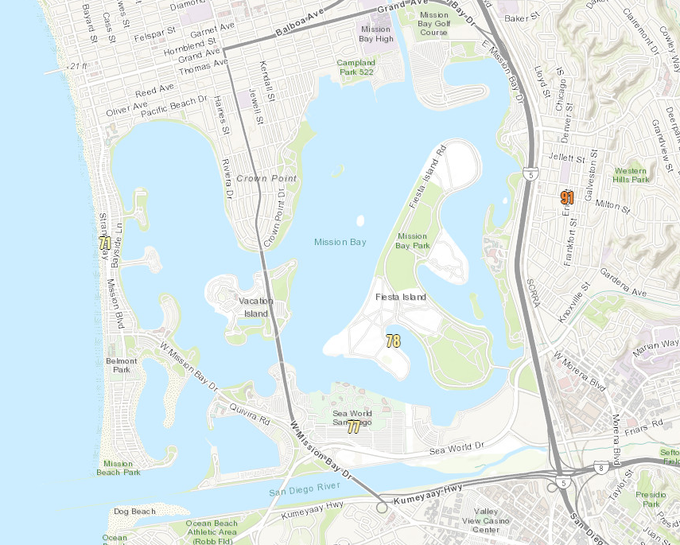
Craveology Cafe and the North Star Science Store are temporarily closed for renovation.

Image: NWS San Diego
San Diegans know their city is notorious for its microclimates. The combination of mountains, valleys, canyons and mesas that dot the surface are often responsible for these interesting weather patterns. In the Fall 2019, the National Weather Service (NWS) in San Diego picked up one of the most extreme head-scratching examples of a microclimate: a 20°F temperature difference from one side of Mission Bay to the other.
On October 24, 2019, the NWS recorded 71°F near Mission Blvd. while a monitoring station near Interstate 5 recorded 91°F, two locations less than 3 miles (4.5km) apart.
How could two locations within view of one another have such drastic temperature differences? Is this a location you would expect to find a microclimate? Why or why not?
What questions can we ask to learn more about this phenomenon?
Resources:
WaterNewsNetwork, San Diego’s Six CIMIS Climate Zones
Leonard Perry, University of Vermont: Microclimates: What Do They Mean To You?